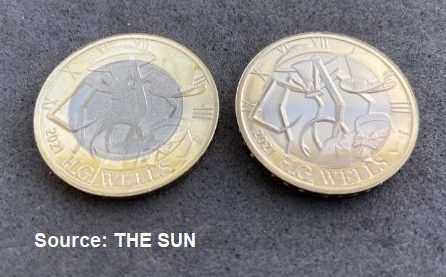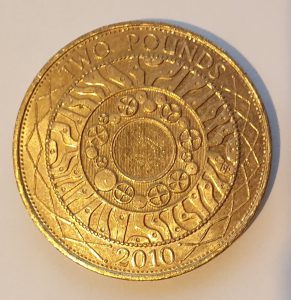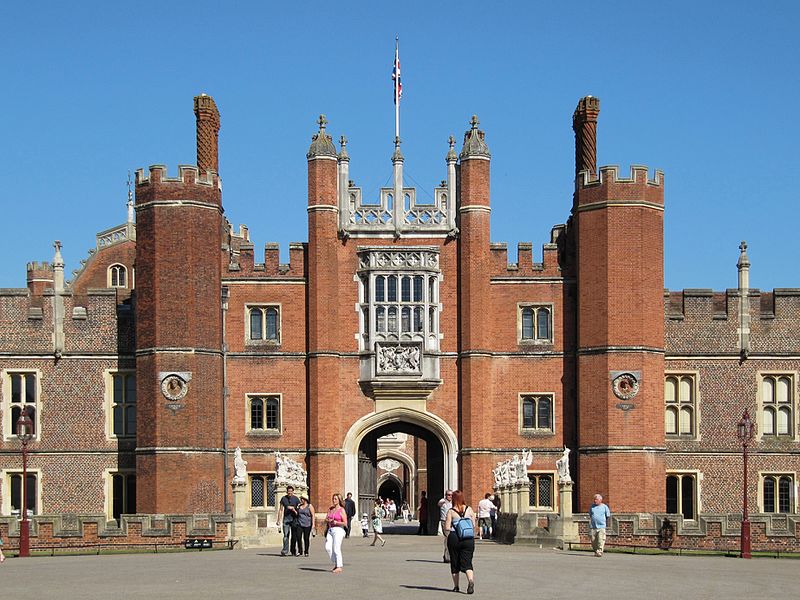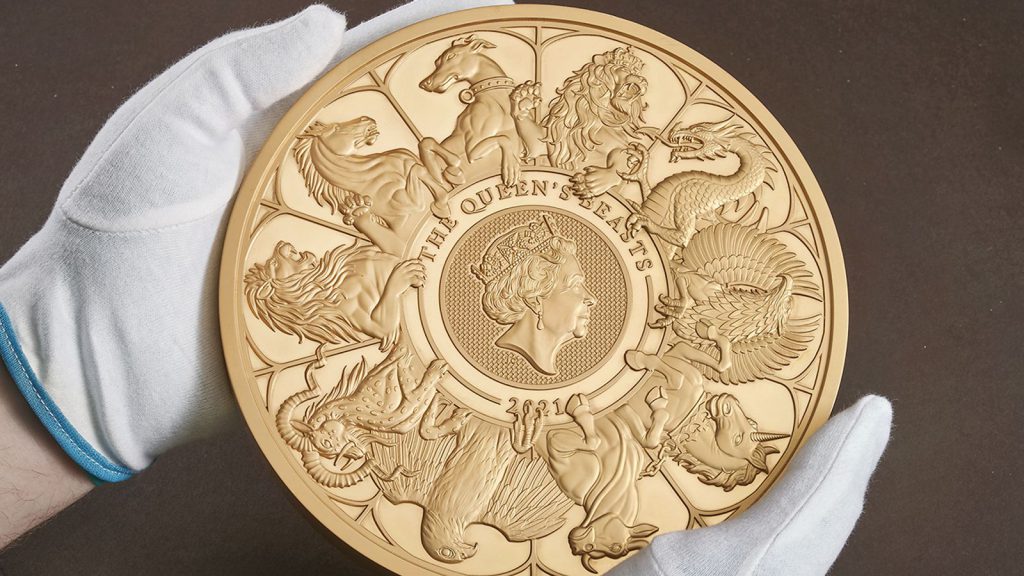Posts by Change Checker
Is your H.G. Wells £2 coin worth thousands? How to spot if you’ve got an ‘error’ coin!
Every keen collector knows that it is worthwhile paying close attention to the small details of your coins – it’s the only way you can ever hope to spot an error.
From edge inscription mix ups to inverted effigies, there are a few stories that crop up more often than not. However, recently, a couple of ‘error’ stories have cropped up, that Change Checker really think you should pay attention to – involving an H.G. Wells £2 and the Technology £2…
Stay tuned as we take a closer look at these ‘errors’ and help you determine if your £2 coin is a genuine rarity!
H.G. Wells £2 – Blank ‘Error’

This £2 coin was issued as part of the 2021 UK Commemorative Coin set and it marks the 75th anniversary of the death of science fiction novelist, H. G. Wells.
With the clue in the name, this bi-metallic coin is made up of a combination of a silver coloured cupro-nickel disc and an outer yellow nickel-brass ring.
In the case of this H.G. Wells £2 coin however, it appears that the blank used has a thicker yellow ring, much wider than what we’d see on normal £2 coins.

When striking £2 coins, the first step is to punch a hole through a blank planchet to create the outer section. The inner core is taken from a different metal, sized to fit inside the outer ring.
There have already been estimations that if this coin was to be sold at auction, it could fetch over £1,000! We’re going to be eagerly awaiting confirmation from The Royal Mint whether this error is genuine or not. Nonetheless, it certainly makes for interesting collecting!
This coin is yet to be individually issued, so any ‘error’ versions will have come exclusively from the 2021 UK Annual Set. It’ll certainly be interesting to see if any other stories crop up after the coin’s individual issue….
Whilst there are no identical examples to compare the H.G. Wells £2 ‘error’ to, there have been previous instances of the inner and outer sections of £2 coins not quite matching up:
Clipped Planchet

In the above image, the inner core was punched out from the end of the sheet of metal used for blanks, forming a straight or ragged edge clip.
Whilst this also occurs with monometallic coins, the pairing with an outer ring exposes a large gap which is much more noticeable.
The Royal Mint strike millions of coins each year so it is inevitable that variances will occur during the striking process and can’t always be picked up during quality control, despite the fact that this particular coin would weigh less than the standard 12g £2 coin.
Off Centre Inner Core

The inner core of this coin hasn’t been united properly prior to being struck, resulting in an off centre inner core.
Due to the way the inner and outer core are struck together with the two metals being lined up and then fused together during striking, a misalignment will mean that the inner core spills into the outer ring, as seen in the image above. There might also be a gap between the two metals on the opposing join.
Faulty Outer Ring

This particular mis-strike, shows a faulty planchet or outer ring, where the inner core is exposed.
In the image above, you can actually see the specific engineering design features where the inner core is grooved to help the metal flow bond to the outer ring and fuse during striking.
Similar to the first mis-strike we looked at, this could be caused by a clipped planchet, this time created when the outer ring was punched, however coins like this may also be caused by tampering post striking, for example by fakers trying to replace the inner core of a £2 with another coin to pass off as a rare error.
Bronze £2 Error

The ‘Monometallic’ £2 is described as the Holy Grail of bimetallic ‘errors’ and is the result of the nickel-brass £2 blank not having the inner core section punched out before being struck.
This means that the £2 coin is made from one full piece of nickel-brass, completely contrasting the very idea of a bimetallic coin.
A 2007 monometallic £2 was verified by The Royal Mint and in the email confirming the mis-strike it was mentioned that they had only seen 4-5 similar coins before.
However, in 2021, Change Checker was contacted by a collector called Amin who informed us that he had found this exact error coin but with a 2010 date.
After sending details of his coin to The Royal Mint for further information, it was confirmed to be genuine error as a result of the minting process.

This rare striking error is highly sought-after and coins have achieved extraordinary prices in private sales and auctions.
Whilst information of this coin’s sale has remained private, it’s certainly a very interesting story and we imagine the collector can expect to see a very impressive return on this coin…
We look forward to the individual release of the HG Wells £2 later this year and will certainly be keeping our eyes peeled for any unusual looking variations!
Have you ever come across any of these £2 error coins in your collection?
We’d love to know! Comment below.
Secure the 2021 UK Commemorative Coin Set – featuring the H. G. Wells £2!
Mod-Rock Legends, The WHO, to be celebrated on UK £5 Coin – What we know so far…
Among the most popular and influential bands of the 1960s and ’70s, The WHO were key to defining the mod genre and originated the ‘rock opera’ both in Britain and worldwide.

Despite having an early influence from the American Rhythm and Blues genre, The WHO’s move towards a new style of British rock allowed them to reject any form of pretension when dealing with teenage frustrations.
The WHO’s undeniable popularity, which spans across generations, has granted them numerous awards and they even reached the Grammy Hall of Fame for their single “My Generation” and the albums Tommy and Who’s Next.
But Change Checker is head-bangingly excited to reveal that as of The Royal Proclamation on 28th April 2021, The WHO can add a brand new UK £5 coin to their impressive collection of accolades.

Whilst the design of the coin remains top secret, we can expect the reverse to show a depiction of a guitar shaped pinball machine accompanied by the inscription “THE WHO”.
Whilst it hasn’t been officially confirmed, we can safely assume this coin will be part of the incredible Music Legends series which brought us the 2020 UK Queen £5, the 2020 Elton John £5, and the 2020 UK David Bowie £5.
We’re so excited for the design of this brand new coin to be revealed – we’re sure it’s going to rock the coin collecting world…
If you want to get ahead of the crowd, and be one of the first to receive these coins when they’re individually released, you can do so by signing up to the Change Checker New Issue £5 Subscription Service >>
Be one of the first to receive the brand new The WHO £5 coin!
This is your opportunity to get ahead of the crowd and secure this brand new £5 coin and every future new UK £5 issue at the initial release price of just £10.99 (+p&p) >>
The Change Checker United Kingdom £5 Priority Subscription allows you to own the latest £5 coin releases, delivered to your doorstep, without any of the hassle of ordering the coin yourself!
Queen’s Beasts Series Commemorated with FINAL Celebratory £5!
In 2017, The Royal Mint revealed a series of brand new base metal UK £5 coins featuring an intriguing range of creatures called the ‘Queen’s Beasts’.
The series has been inspired by the ten ancestral and heraldic beasts that have watched over Her Majesty The Queen throughout her unprecedented reign – from her coronation to her Sapphire Jubilee and beyond.
Today, the series as a whole has been commemorated with a BRAND NEW celebratory coin as a fitting finale.
Designed by acclaimed Royal Mint engraver, Jody Clark, the reverse of this coin features not just one, but ALL TEN beasts together on a single coin to celebrate the series as a whole.
The design features each heraldic creature from the series in a striking illustration of Her Majesty’s royal line of descent.
Recognisable as national symbols and representations of the great houses that vied for the throne, the beasts include lions, a bull, a falcon, a horse and a greyhound, as well as creatures of myth and legend.
The Queen’s Beast coins have been some of the most popular releases of recent years and this FINAL celebratory coin is the perfect way to complete the series.
To secure yours in Brilliant Uncirculated quality and in Official Change Checker packaging for JUST £10.99 (+p&p), simply click here >>
The History of the Queen’s Beasts
Over 400 years ago Henry VIII commissioned the sculpting of 10 heraldic animal statues. They were produced to represent the ancestry of King Henry VIII and his third wife Jane Seymour. These became known as “The King’s Beasts” and can still be seen to this day, guarding the main entrance to Hampton Court Palace.

In 1952, in preparation for the coronation of Queen Elizabeth II, sculptor Sir James Woodford was tasked to create ten new statues, similar to “The King’s Beasts” but more suited to the Queen.
He created 10 six-foot tall beasts each representing a different part of her genealogy and thus “The Queen’s Beasts” were born.
The 10 beasts were made up of ‘The Lion of England’, ‘The White Greyhound of Richmond’, ‘The Yale of Beaufort’, ‘The Red Dragon of Wales’, ‘The White Horse of Hanover’, ‘The White Lion of Mortimer’, ‘The Unicorn of Scotland’, ‘The Griffin of Edward III’, ‘The Black Bull of Clarence’ and ‘The Falcon of the Plantagenets’.

The Royal Mint Celebrate the Queen’s Beasts with Their Biggest Coin Ever Made

To mark the conclusion of the Queen’s Beasts commemorative coin collection, The Royal Mint issued a 10kg, 20cm wide coin with the denomination of £10,000.
Taking over 400 hours to produce (including four days of polishing!) this one of a kind original is the latest issue in The Royal Mint’s MasterWorks series.
The production of this coin combined traditional engraving machines to cut the intricate design, followed by a master toolmaker hand-working the coin to remove any marks from the cutting.
One lucky collector is already claimed to be the owner of this masterpiece, having allegedly paying a six-figure amount!
We certainly think it’s an impressive addition to any collection and it’s issue acts as a testament to the popularity and mastery of the Queen’s Beast coins.
Change Checkers have voted for their favourite Queen’s Beasts £5 Coin!
These impressive creatures have each been commemorated on highly sought-after UK £5 coins as a striking illustration of the royal line of descent.
We asked you to vote for your favourite Queen’s Beasts coin and the results are in…

It seems this brand new 2021 UK Queen’s Beasts £5 coin is the favourite amongst Change Checkers, as it takes an impressive 55% of the votes! The 2017 Unicorn of Scotland comes in second, closely followed by the recent 2021 Griffin of Edward III £5.
Will you be securing the brand new 2021 UK Queen’s Beasts £5 for your collection? Let us know in the comments below!
Secure the 2021 UK Queen’s Beasts £5 in Brilliant Uncirculated Quality!
Own the brand new 2021 UK Queen’s Beasts £5 in CERTIFIED Brilliant Uncirculated quality for JUST £10.99 (+p&p).
Your superior collector quality coin has been protectively encapsulated in Official Change Checker packaging to preserve for generations to come.
Secure your 2021 UK Queen’s Beasts £5 today by clicking here >>




